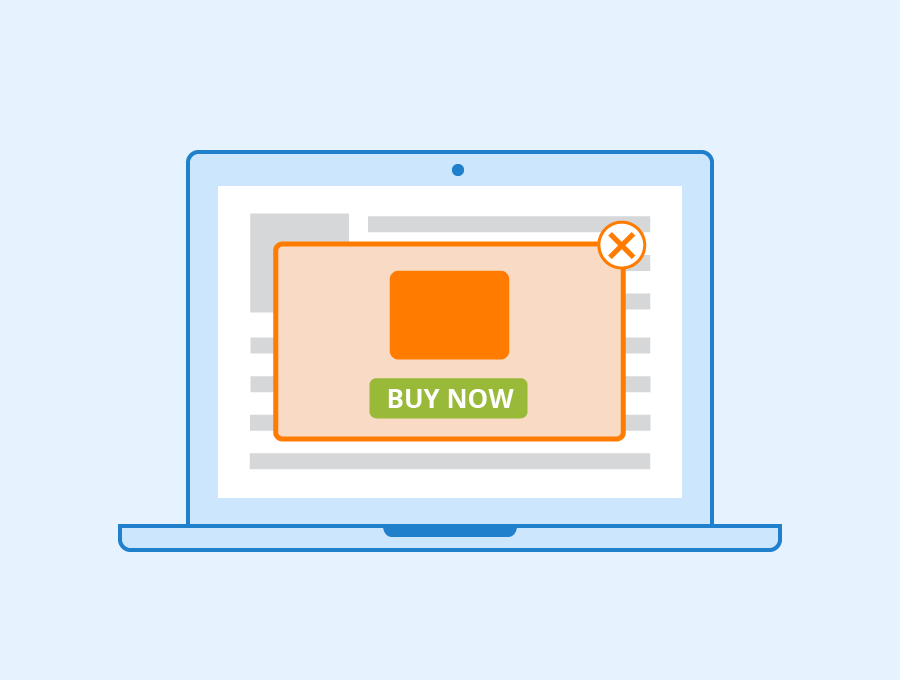
Looking at the variety of different widgets and pop-up windows, it may be challenging to understand how they differ from each other and which type is going to perform better. To attract more leads, the concept of personalized offers sounds like the right choice. The question is, which one to settle on?
Types of Pop-ups
Generally, pop-ups are small boxes that appear over a visited page to deliver information or display an ad. Their main purpose is to provide convenient use of the website for customers and increase conversion for the business itself. To ensure an unforgettable user experience, it is quite important to opt for a specific type that will suit the specifics of the business and organically fit into its concept. Let’s have a look at some of the options.
- Modals. These are floating boxes that appear at the center of the website, disabling the main page until interacted, as they require users’ attention and action. Modals can come in handy while showing information, such as current discounts and/or new releases.
For the exact purpose of making customers participate in promotions or simply provide some personal information such as name, email address, and feedback so that businesses have a database for research and direct marketing.
Using a catchy question or a humorous slogan as the title of your modal will grab more customers’ attention and, therefore, increase leads. To get the most from the modal, think about its objective and content. They must fit into the whole concept of the website and, ideally, create a favorable situation for both sides.
As an example, a pretty well-known Converse company is willing to give a 15% discount for the next order in exchange for an e-mail subscription.
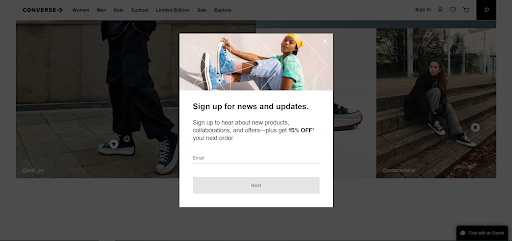
- Overlay. It is quite similar to modals in terms of functioning. It disables the use of the website, as it typically takes over the full screen, obscuring the previous page. Page overlays give more possibilities for custom design and provide some additional space for more information.
- Pop-ups. Normally they are defined as blocks that appear somewhere at the left or right side of the page, or above in the middle, and don’t disable the main page.
They are mainly used for notification purposes and might not require any action from the users’ side. But how to make them stand out? A witty wording can turn an irritating cookie notification into something more pleasant and, consequently, create a better user experience.
Starbucks company informs its customers about using cookies starting with: This site uses cookies, but not the kind you eat.
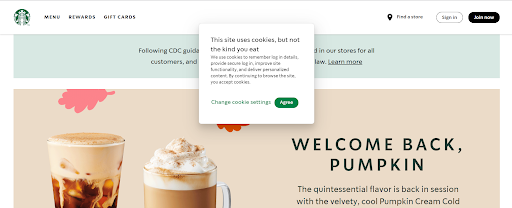
- Chat messages. Creating an impression of face-to-face interaction, they usually serve to ease the use of the website, provide better collaboration between the service and customers or help with making a decision.
According to the 99Firms statistic, around 73% of customers found live chats the most convenient way of communication with the company. Messages appear based on already established custom scenarios, like timing and text. Depending on the main aim of the website, there are many possibilities to adjust messages according to various purposes. Even a nice welcome line can make all the difference by setting the right mood.
Create a pop-up to remember
Having chosen the right pop-up template for the website, it’s time to think about ways of how to make it work. Here are some tips.
1. Try an incentive. Any kind of give-and-receive idea can become a key to a successful deal, whether you offer a discount, free shipping, or a free trial.
Give customers some time to browse before triggering the offer. You wouldn’t want to overwhelm them with spamming floating boxes, right?
2. Just in time. Pop-ups with limited timing awake the sense of urgency and excitement. These can be special discounts for holidays as well as just a daily offer.
And just like that, the Decibullz company provides a time-limited discount for their products, using a pun: Sounds like you’re about to save!
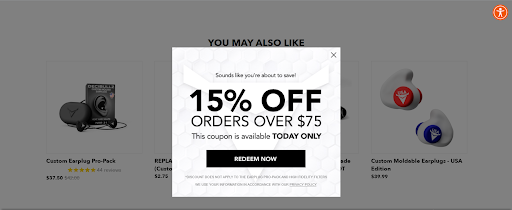
3. Gamify your pop-ups. Entertainment always was and is a vital part of human nature, so why not use it to engage with customers?
Deloitte’s survey showed that 26% of Gen Z named games their preferable way of entertainment, thus they respond to it way better. Consider this option if your target audience
Deloitte’s survey showed that 26% of Gen Z named games their preferable way of entertainment, thus they respond to it way better. Consider this option if your target audience is young people born after the mid-90s. Such an approach sets a gambling mood, as in the case with MFMG Cosmetics, whose pop-up reminds of a slot machine.
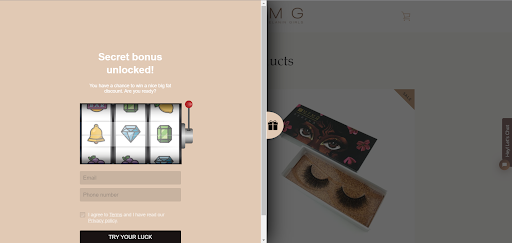
4. Make it relevant. Create a meaningful pop-up with a straightforward message, in other words, make it clear what you offer and what your customers are signing up for.
Personalization will never be superfluous. Give a try to diverse pop-ups for different parts of your website depending on products or services offered. What customers are interested in is the information displayed briefly, concisely, and full of the information they need. If customers fill in too detailed information, they will feel too time-consuming, sometimes become annoyed, and leave.
5. One is good, but two are better. A cross-sell pop-up may encourage a customer to buy a bundle of products if pop-ups display related goods at the right time.
Show relevant items when a customer has already decided on something. For example, alongside the notification about adding an item to cart on a Puma website, some recommendations that potentially might be interesting for a customer, based on their choice, ‘pop up’.
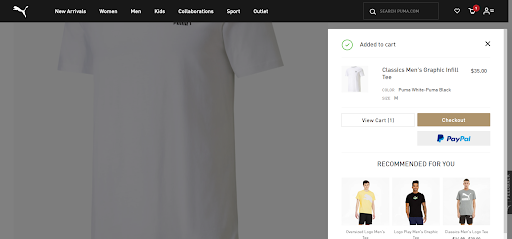
6. Work the phone. Don’t underestimate smartphones as a business tool. Make sure that the pop-ups you display on the website are mobile-friendly.
As stated in a 99Firms survey, m-commerce makes more than 50% of all sales worldwide and the numbers are expected to increase. You can also control pop-ups and reach customers from various mobile apps, which usually provide all the desktop features in one place.
Final thought
To sum up, everything that has been stated so far, pop-ups are not a newly discovered approach to engage with customers on the website. But if chosen and displayed wisely, they will perform well and bring the desired results. The ultimate goal is to increase customer conversion rates, turning them into business customers. Hopefully, with this article, you will have a different view of this form of advertising and can come up with the most reasonable advertising strategy.
Visit 13Chats for more information!
